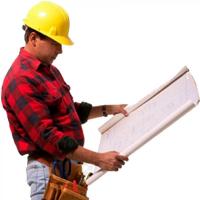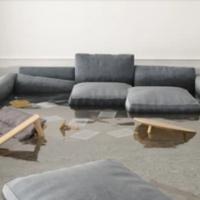6 Things You Should Do After a Flood
by Boris Dzhingarov on Jun 13, 2018
Floods can be overwhelming, whether they’re caused by a plumbing failure, falling water, a sewer backup, a sump pump malfunction or rising groundwater. Many people don’t know what to do except to wait for the floodwaters to recede, and many don’t know what to do after the floodwater has receded.
Here are six things you should do after a flood.
Don’t Take Unnecessary Risks
Turn off power to the building so you can’t get shocked, especially if there is still standing water in the home. Check for signs of structural damage like cracked or warped walls and carry a flashlight so you don’t fall through a new hole in the floor. Avoid downed power lines. Stay away from suspected gas leaks. Contact utility companies if you think there are damaged power, water, or sewer lines.
Stop It from Getting Worse If Possible
As the homeowner, you have a responsibility to try to prevent additional damage from occurring to the property. First and foremost, stopping the flood is possible, if you can turn the water off. Minimizing the damage includes putting boards over broken windows and tarps over holes in the roof when a storm is to blame. Take pictures of what you did to prevent further damage.
Protect Your Health
Even clear flood water could be contaminated by sewage or chemicals. Wear waterproof boots and rubber gloves when you enter the building. Wear protection as you handle items that were damaged by the floodwaters. Throw out all food that came into contact with floodwaters. You may need to boil water until the local authorities say it is safe to drink straight from the tap.
Take Pictures
Before you make any repairs, take pictures to document the damage. The pictures show the extent of the damage and help you to prove your case with insurers. For example, you should take pictures of the wet walls and baseboards to show how high the water levels were inside the home.
Call Your Insurance Company
Notify your insurance company of the flood damage as soon as possible. Ask the insurer if you need to wait for an adjuster to assess the damage before you’re allowed to make repairs. Document the conversations you have with the insurance company, take pictures, and take notes as you make repairs. Once you have permission from the insurer, work to remove water from the home. This may require a wet vac, buckets, or sump pump.
Mitigate Mold Damage
Mold can start growing within a day or two of a flood. Clearing out the water is a good first step. Bringing in fans to help air it out is the next step. Dehumidifiers are ideal for enclosed spaces.
To help mitigate mold, you must remove wet things from your home like carpets and bedding. Then you should start cleaning surfaces with non-ammonia detergent followed by disinfection with a ten percent bleach mixture. Never mix ammonia and bleach together and test the cleaning solutions on a spot before you try to apply it to a large area since chemicals like these can cause discoloration. You should also consider contacting professional cleaners who are specialized in this type of work.
Conclusion
While floods can seem devastating, it is possible to recover from the damage. You may spend weeks cleaning up the mess or dealing with repairs, but you will be able to safely enjoy your home again soon.
Popular Articles
Three Places to Spend Money on the Exterior of Your Home
When you have the exterior of your home remodeled, you are investing, time, energy and convenience into the project and you want to make sure that...
94927 Views
Homemade Headboards-Make an Upholstered or Wooden Headboard
Homemade headboards can add a lot of personality to any bedroom. They can be coordinated with existing furniture and room decor or they can be the...
74314 Views
When to Use a Brush, Roller or Sponge Brush
Brushes are a good choice for painting trim and woodwork. They are also useful for cutting in the edges around the top and bottom edges and corners...
71749 Views
Creating a Cottage Kitchen with Bead Board
Kitchen decor can range from modern and bold to elegant and elaborate by using strategic kitchen pieces. One of the most popular decorating trends...
52753 Views
Gas Fireplace Diagnostics and Troubleshooting
Follow these steps for diagnosing and troubleshooting Gas Fireplaces repairs. For the average DIYer, this may seem intimidating, depending on the...
30581 Views
Latest Articles
10 Concrete Patio Ideas on a Budget
A concrete patio can be a game-changer for your outdoor space. It is durable, versatile, and can be customized to fit your style. But what if you...
on Mar 25, 2025
Tips for Creating a Stunning Personalized Photo on Canvas
Order the unique beauty of a personalized photo on canvas and bring your memories to life. With a customized photo on canvas, you can transform...
on Mar 7, 2025
Best Areas to Buy Property in Singapore for Long-Term Growth
Singapore's real estate market remains one of the most stable and lucrative in the world. With limited land supply, strong governmental...
on Feb 18, 2025
Troubleshooting Excess Water in Your HVAC Secondary Condensate Drain Pan
When maintaining your air conditioning system, it is easy to overlook the condensate drain pan - until excess water starts pooling in places where...
on Jan 12, 2025
Real Estate Investment Trusts (REITs): A Beginners Guide
By combining the advantages of stock market and real estate investing, Real Estate Investment Trusts, or REITs, offer an alluring investment...
on Dec 19, 2024
Featured Articles
What Type of Licensed Contractor Should You Hire?
on Feb 28, 2017
Hire Contractors / Estimates

Looking for a specialty project? There are many types of contractors available for your home improvement needs. Finding the right type of...
Sponsored Articles
Best Areas to Buy Property in Singapore for Long-Term Growth
on Feb 18, 2025
Real Estate / Finance

Singapore's real estate market remains one of the most stable and lucrative in the world. With limited land supply, strong governmental...
Actions
Top Categories
- Garden / Landscaping / Patio — 264
- Kitchen / Bathrooms — 240
- Real Estate / Finance — 203
- Appliance / Repair — 186
- Interior Design / Decor — 184
- HVAC / Air Conditioning — 148
- Cleaning / Maintenance — 144
- Improvements / Remodeling — 131
- Plumbing / Basements — 118
- Floors / Tile / Hardwood — 116
- Doors / Garages — 113
- Safety / Security — 113
Articles Archive
More DIY Articles
How to Create a Professional Office Space with Ease
When creating a professional office space, many business owners attempt to decorate their space themselves. While the business owner may have...
What are the Advantages of a Metal Roof
Metal roofing is durable and beautiful, allowing a home to stand out from others with conventional tiled roofs. A metal coating can last a...
Tangerine Tango: How to Decorate with This Vibrant Color
Decorating with color can be tricky, and working with bright, bold colors can feel especially daunting. The color-powerhouse Pantone Color...
Before You Sign: How Home Inspections Identify Hidden Hazards in Your Future Home
Buying a home is exciting, but hidden dangers can turn that dream into a nightmare if not addressed early on. Beyond what is visible during a...
Wooden Worktops Give a Kitchen Style, Warmth and Good Looks
Fitting a wooden worktop in your kitchen provides you with an attractive and durable work surface. There is no doubt that wood gives a warmth and...

